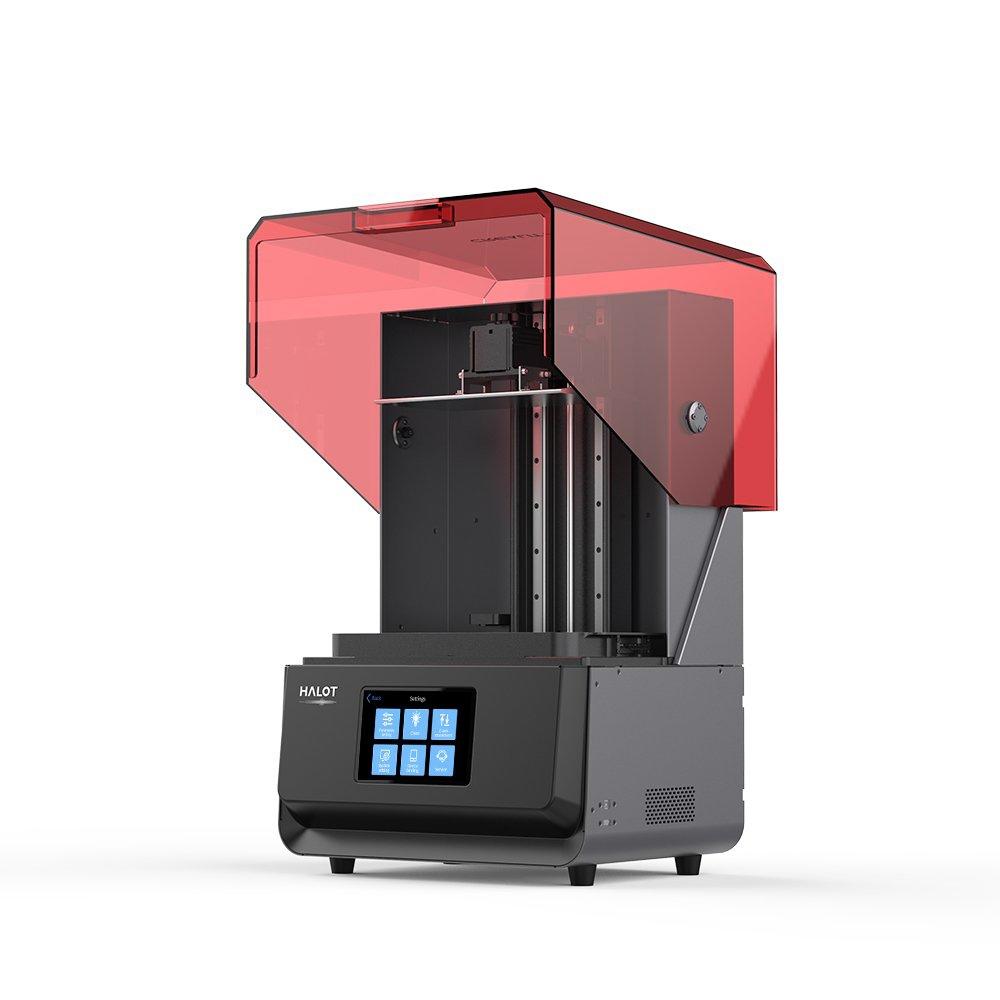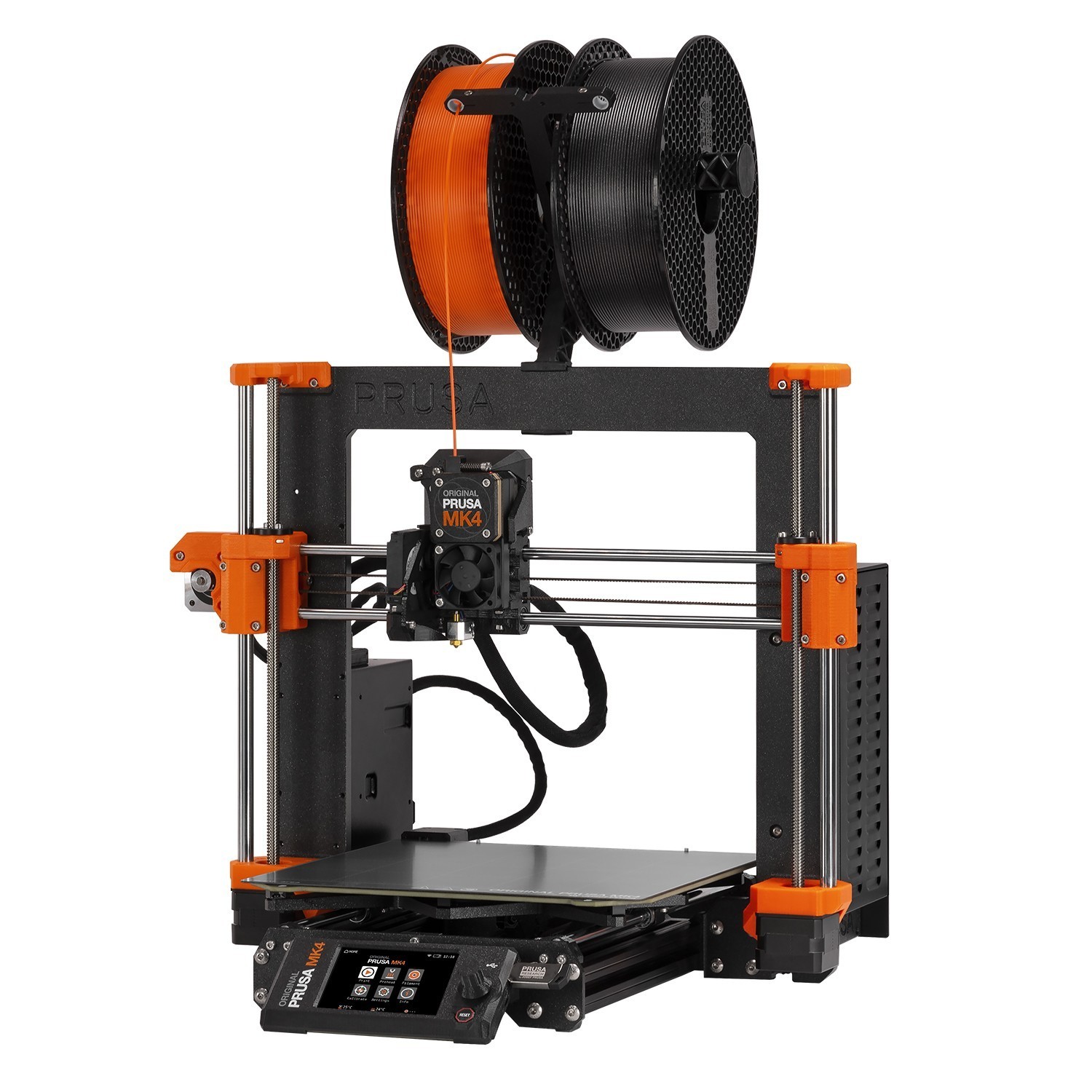Compare Halot Max vs Original Prusa MK4 3D Printer
Comparison between the best 3D printers
Choose the best 3D printer at the best price. The cheapest 3D printers are here.
Buy a 3D printer here with 3D Fila.
 |
 |
|
| Model | Halot Max[BUY Halot Max] |
Original Prusa MK4 3D Printer[BUY Original Prusa MK4 3D Printer] |
| Printing Material | Resin | Filament |
| Buy Resin for Creality 3D Halot Max | Buy Filament forPrusa Original Prusa MK4 3D Printer | |
| Estimated price | $3000,00 | $1099,00 |
| Manufacturer | Creality 3D | Prusa |
| Release Year | 2021 | 2023 |
| Print Volume [mm] | 293x165x300 | 250x220x210 |
| Printer Size [mm] | 480x387x770 | 500x400x550 |
| Weight [kg] | 32,5 | 7 |
| Power Loss Recovery | NO | YES |
| Maximum Resolution [mm] | 0,03 | 0,1 |
| Processor | Custom 32-bit xBuddy electronics with STM32 | |
| Display | Display touchscreen 5'' | Display touchscreen 3,5'' |
| Power Supply | 240 W | |
| Connectivity | SD / USB / Wi-Fi | USB / Wi-Fi / internet via Prusa Connect |
| Operating systems | Windows, Mac, Linux | Windows, Mac, Linux |
| Date of registration in the system | 2022-11-04 | 2023-06-06 |
| Release date | 2021 | 2023 |
| Extra features | The Halot Max printer stands out for its large print size (293 x 165 x 300 mm) and uses SLA technology. It has an integral light source for improved accuracy and a strong core with an advanced operating system. Its Z-axis module ensures high precision, supported by efficient slicing software. The machine offers online OTA updates and boasts an adjustable layer thickness between 10 and 200 microns. Its XY-axis resolution is 3840*2160, with 0.05 mm accuracy, and an integral 405nm light source. The printer includes a 5" touchscreen and multiple connectivity options, such as USB, Creality Cloud, and HALOT BOX WiFi. With cutting-edge technology, the Halot Max is ideal for printing small models with uniform precision, thanks to its self-developed lighting system and stable printing mechanism, which includes dual linear guides, ball screws, and an intelligent brake system. | The Original Prusa MK4 stands out with automatic first-layer calibration via Loadcell sensor, high-speed enabled by Input Shaper and Nextruder for precise prints. It includes quick-change nozzles, customizable UI, and Ethernet/Wi-Fi connectivity. It supports a wide range of materials, from PLA to flexibles. Equipped with a 32-bit xBuddy mainboard and precise stepper motors, it offers exceptional print quality, enhanced security, and remote printing options via Prusa Connect. |
| Support for multiple colors and materials (AMS and CFS) | NO | NO |
Notes * |
||
| Cost-benefit | 5 / 10 | 6 / 10 |
| Hardware | 1.2 / 10 | 3.2 / 10 |
| Tela | . | . |
| Print volume | 3 / 10 | 3 / 10 |
| Performance | 9 / 10 | 1 / 10 |
| [BUY Halot Max] | [BUY Original Prusa MK4 3D Printer] |
Conclusion |
| In comparing the Halot Max and the Original Prusa MK4 3D printers, several factors come into play, including price, functionality, and performance. The Halot Max, while being the more expensive option, offers a significantly larger print volume and higher resolution, making it particularly suited for detailed resin printing tasks. It boasts advanced features such as a customizable layer thickness and an efficient slicing software, which enhance its accuracy and precision, crucial for professional-grade prints. However, it lacks power loss recovery capability, which could be a drawback for uninterrupted printing sessions. Conversely, the Original Prusa MK4 presents a more economical choice with commendable features tailored for versatility in material usage. It emphasizes user-friendliness with its automatic first-layer calibration and offers connectivity options that include internet capabilities via Prusa Connect, making remote management convenient. Although its print volume is smaller and the maximum resolution is lower than that of the Halot Max, it compensates with strong overall reliability and performance consistency. Ultimately, the decision between the two printers hinges on specific user needs. The Halot Max is ideal for those focused on high-end resin prints requiring detailed accuracy, while the Original Prusa MK4 is better suited for users seeking a balance of cost, versatility, and ease of use in filament printing. Both options have their strengths, making them solid contenders in the 3D printing market, but prospective buyers should weigh their preferences for print quality versus functionality when making a final choice. |

